James Welling Projects, Brandywine River Museum of Art, Pennsylvania
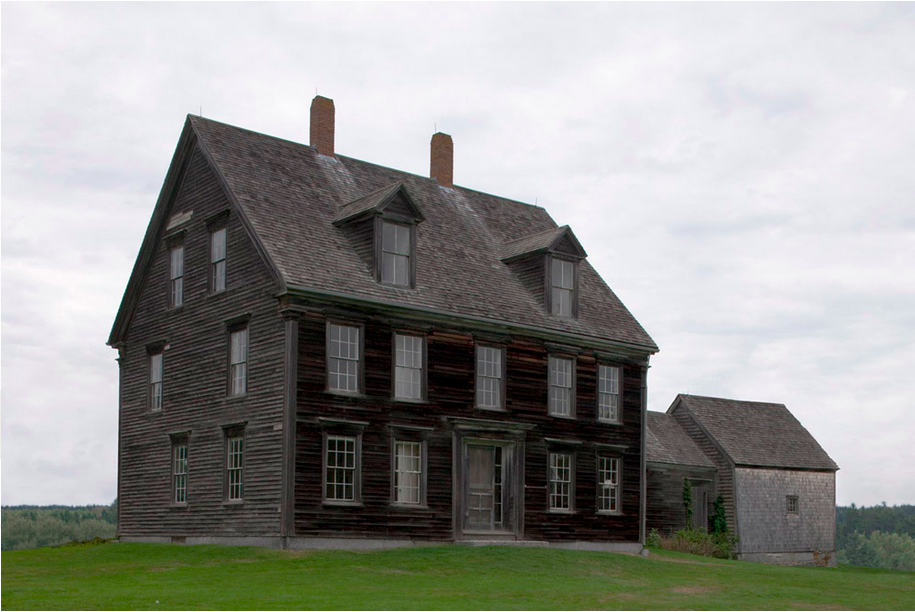
James Welling, Olson House, 2010, Archival inkjet print on rag paper, Image courtesy of David Zwirner Gallery
Deep in the heart of Pennsylvania, in a town where one of the most critical battles of the Revolutionary War occurred in 1777, is Chadds Ford and the Brandywine River Museum of Art. Located West of Philadelphia and North of Delaware, the museum, founded in 1971, is housed in a former mill and contains an impressive collection of American art with a focus on the Wyeth family. The Wyeths, whose artistic legacy commenced with Newell Convers Wyeth or N.C. (1882-1945), then continued for two additional generations. Andrew Wyeth (1917-2009), perhaps the most well-known, had a home and studio not far from his father’s and his son Jamie Wyeth (b.1946), continues the family tradition even to this day also in Chadds Ford. An illustrator by trade, N.C. Wyeth was interested in narrative tales, and is known for his visual representation of Treasure Island by Robert Louis Stevenson initially published in 1883. His narrative relationship to the body, traversed through the generations and the figure was a prominent subject in the paintings of Andrew Wyeth and his son Jamie Wyeth. Throughout the Wyeth family, which also included lesser known artist Carolyn Wyeth, the stylistic quality and assured apprehension in each brushstroke is instantly recognizable and even nostalgic, whether depicting an actual or fictional scenario.
Here is where we segue to the work of photographer James Welling who commenced upon an ambitious photographic project around the Wyeth family, specifically Andrew Wyeth shortly after the painter’s death in 2009. Having always been fascinated with the the son of N.C. Wyeth, Welling first came across Andrew Wyeth’s paintings at the Wadsworth Atheneum in Hartford, Connecticut and the bond he felt was strong. After receiving his Masters degree from California Institute of the Arts and a ‘deprogramming’ around figurative painting, Welling found that he returned to the family legacy with a particular interest in picture making and process. While technically proficient, the Wyeth family always had mixed reception amongst the art world crowd. Publicly popular, the praises they were sung often fizzled in the face of Abstract Expressionism. However, one of the areas where Welling found inspiration was in a story that Wyeth recounted about a bull kicking over his palette when working from life, splattering the paint onto the surface of the canvas. Wyeth left the splattering, which is still evident today, fascinating Welling and allowing him to think about the concept of painting and image making and how a painting can make itself.
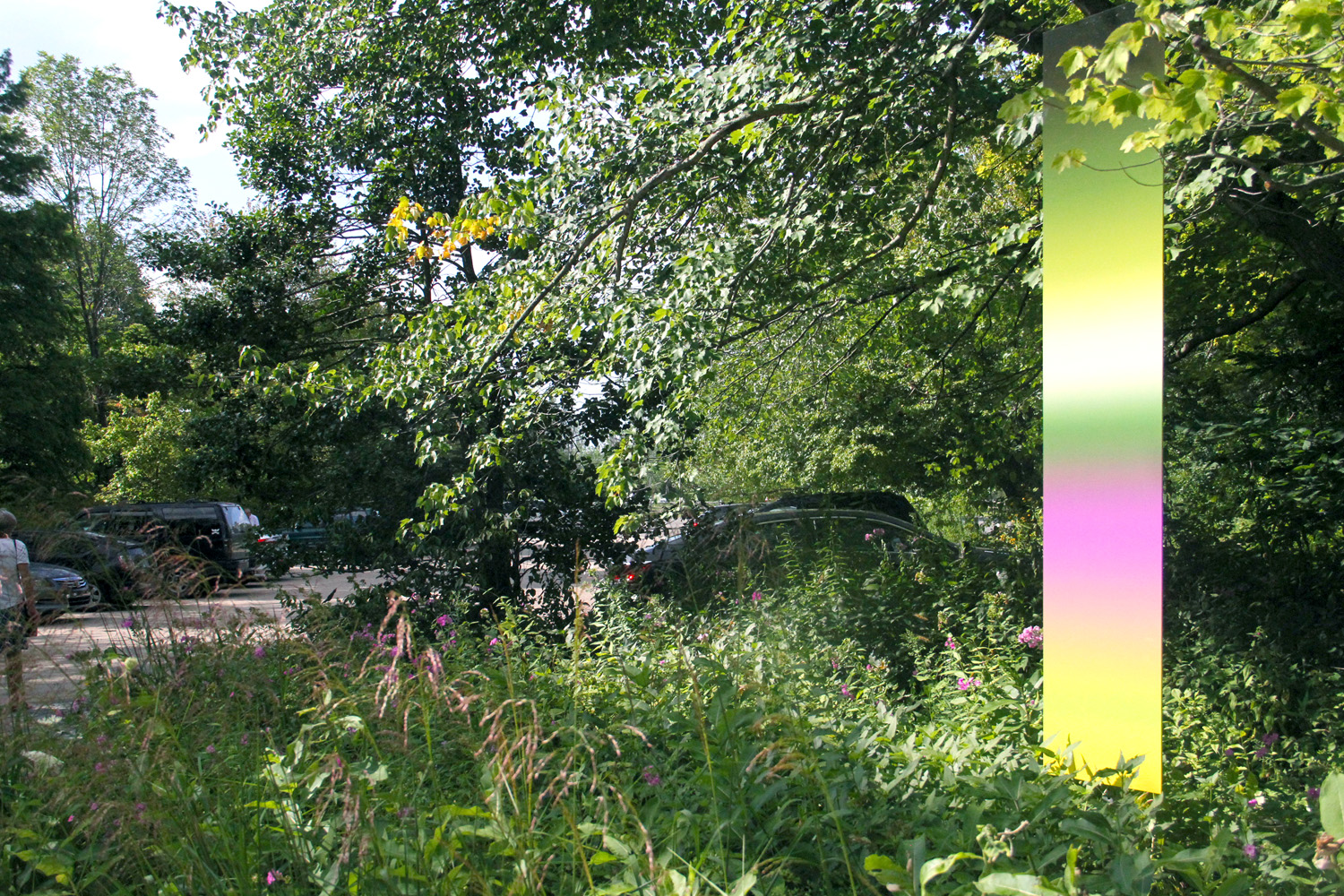
James Welling, Site-specific “Gradient” on the property of the Brandywine River Museum of Art, Chadds Ford, PA, Photograph by Job Piston, 2015
In both painting and photography, an image is made. After that has been determined, much is left up to the artist, or image maker, to decide what the original intention is and how subject and medium play a roll in the end result. In this current exhibition at the Brandywine River Museum of Art, Things Beyond Resemblance: James Welling Photographs and Gradients, the first ever exclusively of photography, Welling exhibits a series of 50 photographs selected by guest curator Philipp Kaiser and photographic sculptures he calls Gradients. The photographs on view are mostly from a series of works that Welling shot in 2010 between sites in Maine that had a resonance for Andrew Wyeth and his studio in Chadds Ford, Pennsylvania. Some of the photographs are dated 2013 while the Gradients are a brand new series commenced upon in 2015. Andrew Wyeth was often looked at as a realist painter but actually created life-like scenes that were manipulated to fit his own agenda. Similar,Welling uses Photoshop to subtly alter his photographs. He welds photographic elements in a painterly or constructive way where things are Frankensteined in order to arrive at the final desired, composition. Just as Welling uses Photoshop to build his compositions, Wyeth, used his real world surroundings and altered them on the canvas, even if in a subtle fashion, to fit his agenda. Throughout the exhibition, one can contemplate the question proposed by Welling, “What happens when an artist uses another to mirror themselves and their practice?”
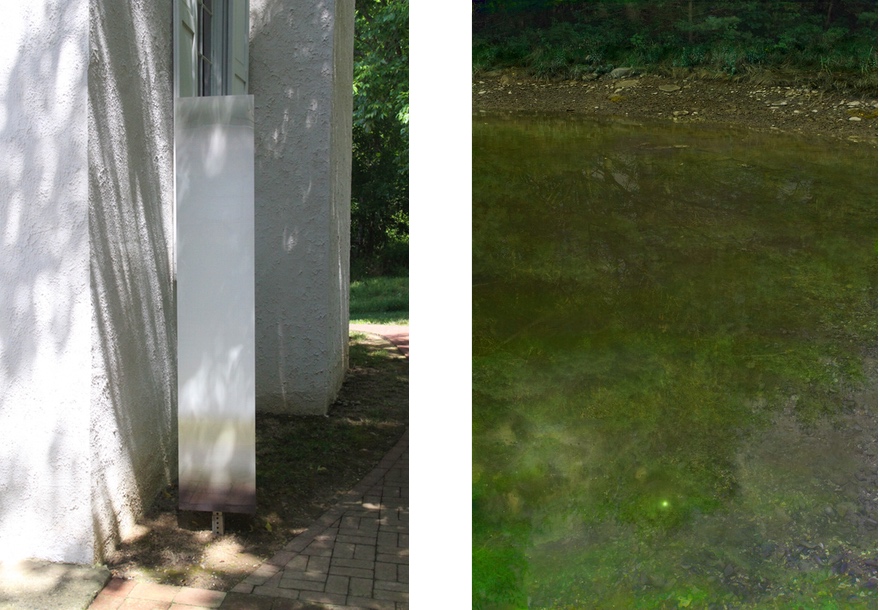
James Welling, “Gradient”, 2015 (left) and “River Cove”, 2010 (right) both installed as part of “Things Beyond Resemblance: James Welling Photographs, Brandywine River Museum of Art, Image (left) by Job Piston, Image (right) courtesy of David Zwirner, NY
On the topic of his relationship between painting and photography, Welling has commented on the technical aspect of the photographic printing process stating, “Inkjet printing is completely different from chemical photograph or c-print. These are all inkjet prints, there is Photoshop, simplistic Photoshop but Photoshop. They have all been manipulated multiple times to find the best iteration and palette of color within that photograph. Maybe it’s a little bit like being a painter, or it’s just another way for the photographer to interact with the image.” Then continuing, “The more I read about Wyeth, I also learned about his studio practice in the Olson House in Maine. His studio was porous or permeable. He worked in many different places which could be considered post-studio; the concept of the studio suiting the artists needs and agenda.” It is in the concept of post-studio, that brings us back to Cal Arts, where Welling studied with John Baldessari and emerged as part of the Pictures Generation. It could be argued, that amongst those such as, Edward Hopper, Jackson Pollock, Franz Kline and Willem de Kooning, Andrew Wyeth was also part of a “Pictures Generation” of sorts in that he sought out likeness using paint in a different way than his peers. In a 2009 article in the New York Times by Michael Kimmelman (“Andrew Wyeth, Painter, Dies at 91”, 2009) written on the occasion of the artist’s death, Wyeth is quoted as saying, “Oftentimes people will like a picture I paint because it’s maybe the sun hitting on the side of a window and they can enjoy it purely for itself,” Wyeth once said. “It reminds them of some afternoon. But for me, behind that picture could be a night of moonlight when I’ve been in some house in Maine, a night of some terrible tension, or I had this strange mood. Maybe it was Halloween. It’s all there, hiding behind the realistic side.”Also stating, “I think the great weakness in most of my work is subject matter. There’s too much of it.”
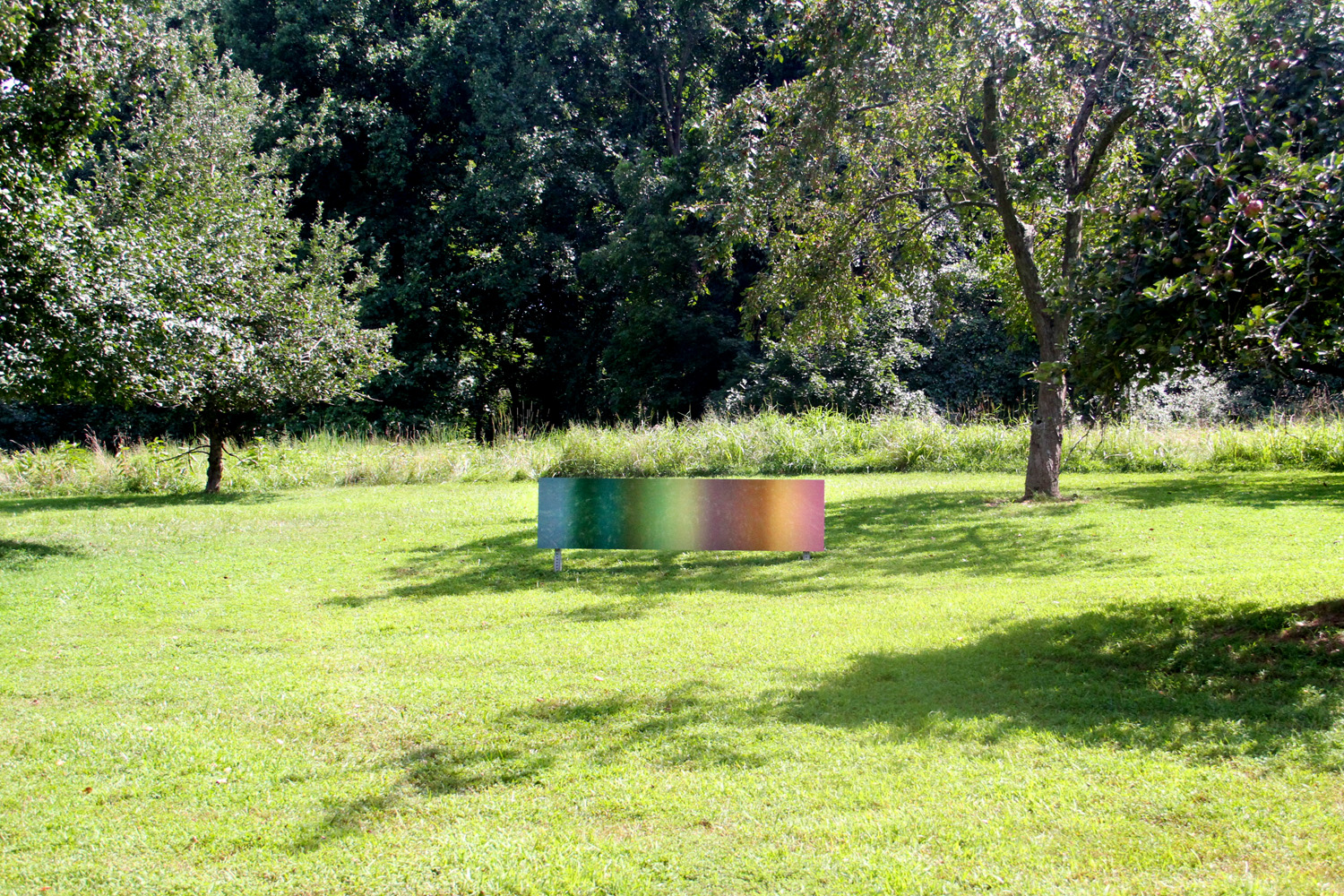
James Welling, Site-specific “Gradient” on the property of the Brandywine River Museum of Art, Chadds Ford, PA, Photograph by Job Piston, 2015
Perhaps the last quote, regarding subject matter, was the artists way of addressing his work in relationship to the time when it was made. Having a particular ‘subject’ wasn’t really favorable, but for a representational painter, not having a subject is nearly impossible. What James Welling did was return to the original locations where these paintings were made. He photographed the environment, without the presence of the human body, as an homage, a study, a —dare we say— subject. Welling dove head first into the project, spending time in each location, looking at what inspired the man as an artist, through the filter of his own practice and photographic lens. The results, now hanging at the Brandywine River Museum of Art near the original property of the Wyeth family, are melancholic and phatasmagoric even. When a physical land is studied, through a psychological lens, returning to the space has that much more resonance. Void of touch, the photographs could almost be documents if they hadn’t been digitally altered. Instead, they exist, like Wyeth’s paintings, as false representations of truth. Somewhere between abstraction and representation, between actualization and fiction is a moment of pause, where one type of reality can merge with another, canonizing the reality of individualism. How one see’s the world can vary, and artists have the tools to share that vision with a wider audience. In regards to representation, Van Gogh, suffering in the prison of his own mind, saw swirls of color. Andrew Wyeth delved into the most banal blade of grass or strand of hair, multiplying his strokes to a fictive place beyond what the human eye can see. Welling, camera in hand, can capture as much truth as can be absorbed by a machine. However, once that image is downloaded and manipulated in Photoshop, what was seen and captured in a frame no longer falls into the same timeline of memory. When a visitor is present in front of the photographs, in a space that houses many of Wyeth’s paintings, what hangs on the wall are remnants of ghosts, momentary worlds that can only exist in their current state.
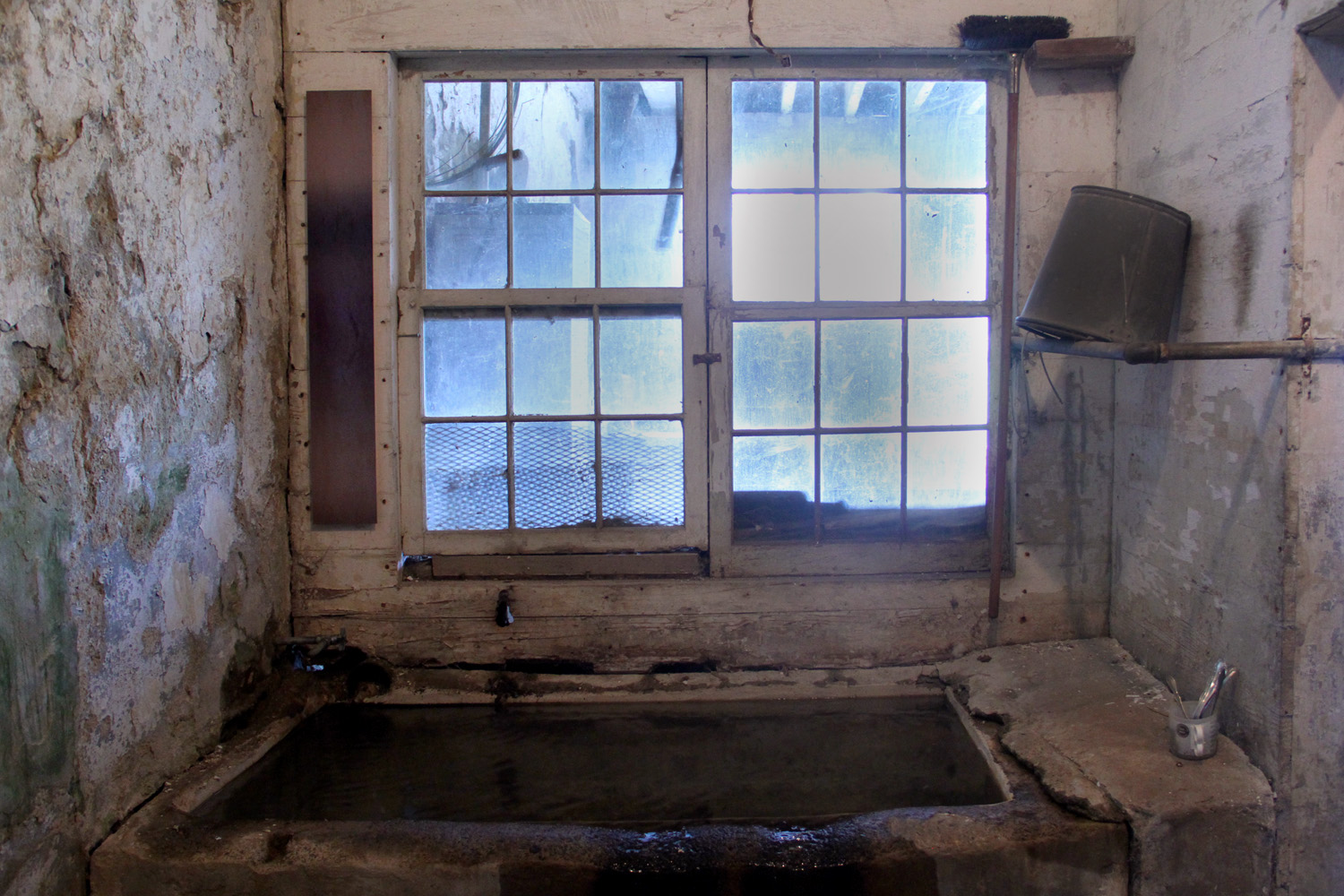
James Welling, Site-specific “Gradient” on the property of the Brandywine River Museum of Art (specifically at the Kuerner Farm) , Chadds Ford, PA, Photograph by Job Piston, 2015
In addition to the photographic series, the Gradients (all 2015) have been installed around the property of the museum and studios. The gradients are infused color spectrums and vary due to their surroundings. Welling, took photographs of the area and then using the eyedropper tool in Photoshop, then selecting colors directly from the habitat (also at times architectural structures), made site-specific gradients using the gradient tool. These sculptural works, all rectangular, are of various dimensions and can be found in unexpected points around the estate. Both vertical and horizontal in format, some are quite small, others stand tall, human height. Beyond the photographs of the land, the Gradients are meditative, awkard and extremely personal in their unique interaction with the land. These final, poignant tributes function silently yet almost as a contemporary hieroglyph, proof of the photographer’s hand in a scenario that he has tried to reclaim as his own. There is a concept of ghosting, absence, and loss. Each Gradient has a mirrored surface, reflecting the studio experience and the partnering of one medium and execution leading into the other. On his practice, Welling states, “Having the photographs here isn’t about comparing my work to Wyeth’s but it’s also about the process. Most people don’t understand the choices that photographers have, they don’t understand the decisions that photographers make.”
Everything has a purpose and is proof of a decision, if made with an actual brush or a digital tool.
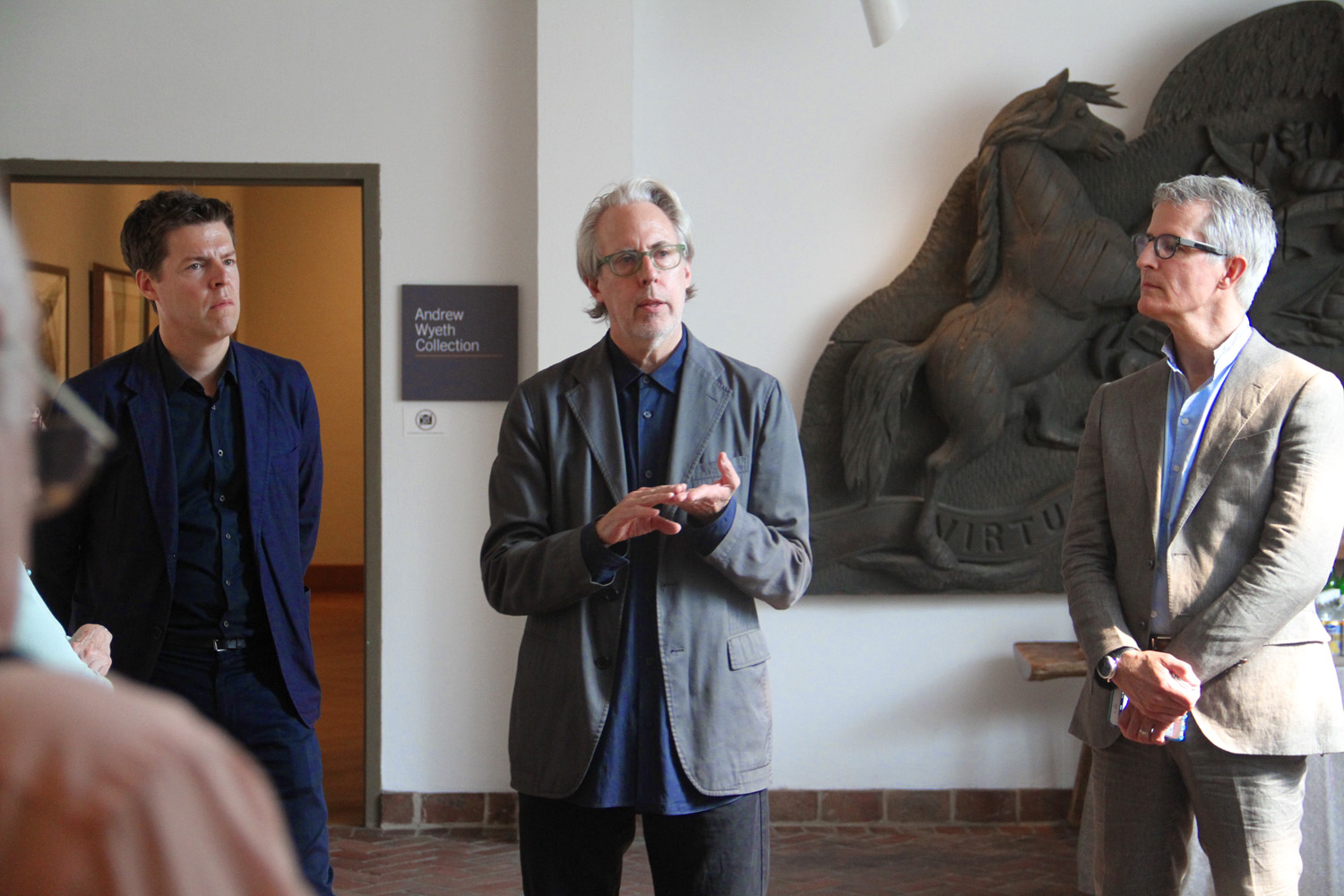
James Welling, center, flanked by Curator Philipp Kaiser (left) and Brandywine River Museum Director Thomas Padon (right), Photograph Job Piston, 2015

James Welling, “Gradients” (front in distance and back in foreground), Installed on the property of the Brandywine River Art Museum, Chadds Ford, Photograph by Job Piston, 2015
“Things Beyond Resemblance: James Welling Photographs and Gradients” will be on view at the Brandywine River Museum of Art until November 15th, 2015. For more on the photography of Job Piston click here.
More soon!
xo
